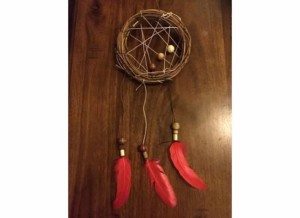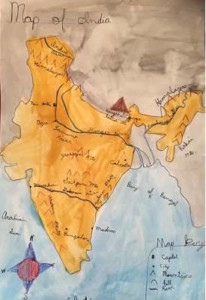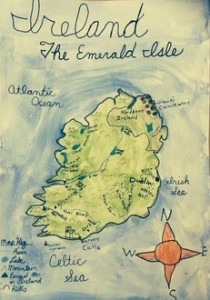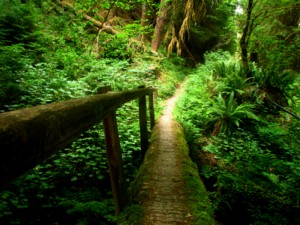Welcome to Our Mexico Country Study!
The Books:
Note: I was able to find most of these books in our local library, but some are so beautiful that they make wonderful additions to your home library. Not every book is necessary for this study, but we read all of them, one at a time, during our morning story times. Stories are a wonderful way to become familiar with a culture.
Just in case the Amazon book links didn’t load on your computer, here is a written book list:
Whiskers, Tails & Wings: Animal Folktales from Mexico – Goldman
Fiesta Femenina: Celebrating Women in Mexican Folktales – Gerson
People of Corn: A Mayan Story – Gerson
Medio Pollito: A Mexican Folktale – Stjohn
Horse Hooves and Chicken Feet: Mexican Folktales – Philip
Mexico (New True Books: Geography) – Landau
Off We Go to Mexico – Krebs
If You Were Me and Lived in….Mexico – Roman
Shadow of the Shark (Magic Tree House) – Pope Osborne
Introduction to Mexico:
To introduce your children to the wonders of Mexico, watch the following videos with them.
Mapping Mexico:
Mapmaking is such an exciting project for children. Not only is your child learning the geography of Mexico in a much more memorable way than fill in the blank maps, but she is learning a historic art form. I find that my children truly learn and retain their geography when they create their own maps, as they are having a visual, kinesthetic, and artistic experience while learning the geography of the region. Here is how we approached mapping Mexico.
Materials: watercolor paper (we use 11 x 17) waterproof India ink pen, watercolors, colored pencils, an atlas or computer for reference maps
(Prepare a cutout in the shape of Mexico by outlining Mexico and cutting it out for your children to trace around- or they can draw free hand on their maps)
To Begin:
Using the Mexico cutout (or drawing freehand), have your children draw Mexico (in pencil) on their papers and then go over the pencil in black India ink. Then have your children watercolor Mexico any color they wish and the waters blue.
Introduction:
Begin by looking at Mexico on the map with your children. Ask them what continent it is a part of. Then note that it is the southernmost country in North America and connects North America to South America. Note that the countries in between the two major continents are referred to as Central America because they are in between, or in the center of, the two Americas.
Ask your children to locate the capital city of Mexico (Mexico City).
Now point to the long peninsula on the western side of Mexico. Tell your children this is called Baja California, but is part of Mexico.
Oceans, Gulfs, and Rivers:
Look at the map of Mexico. Look to the farthest western coast and point out the Pacific Ocean. Have your children label it on their maps.
Explain to your children that a gulf is a large area of water, connected to an ocean, that is surrounded by land on three sides.
Point out the water between Baja California and the main land of Mexico. Tell your children that this is the Gulf of California, also called the Sea of Cortes.
Now point out the water that meets the eastern coast of Mexico. Trace the land that surrounds the water on three sides to emphasize that it is also a gulf. Now tell them that this water is called the Gulf of Mexico and it meets the Atlantic Ocean. Have them label it on their maps.
Use this map to look at the many rivers in Mexico. Have your children find the Rio Grande on the map and draw it on theirs using a blue colored pencil. Then have them label it. Do the same with the Rio Grande de Santiago, Rio Balsas, Usamacinta, Rio Lerma, and as many others as your children would like.
Mountain Ranges:
There are two major mountain ranges in Mexico; The Sierra Madre Occidental range and The Sierra Madre Oriental range. There is also another smaller range called The Sierra Madre del Sur. Use this map to locate the mountain ranges. Then have your children draw them on their maps using upside down V’s and label them.
Cities:
The capital city of Mexico is Mexico City. Using this map, have your children find it on the map and then label it on their maps using a star with a circle around it. Then have them label other important cities such as Guadalajara, Acapulco, Oaxaca, Puerto Vallarta, Mazatlan, Monterey, Cabo San Lucas, La Paz, Cancun, Tijuana, and as many others as your children would like to include.
The Yucatan:
The south-easternmost region of Mexico is referred to as the Yucatan Peninsula. It is a beautiful region with lush rainforests and a tremendously diverse habitat. Using this map, have your children label the Yucatan on their maps. We will look more closely at the Yucatan when we work on our wildlife maps.
Ancient Cultures:
This is a perfect time to explain to your children that Mexico was once inhabited entirely by indigenous cultures that had their own languages and practices before it was conquered and colonized by the Spanish. Therefore, there are many ancient pre-Columbian and pre-Cortes cultures of Mexico, as well as the post Columbian Spanish influenced cultures. The culture and art of the indigenous tribes have impacted modern Mexican culture, art, and dance tremendously. We will be looking closely at a few of those tribes, so it is a good idea to also note where they lived.
The Huichols lived and live in the northwestern region of Mexico, just west of the northern region of the Sierra Madre Occidental Mountains. Have your children label the area they lived in on their maps.
The Aztecs lived (and their descendants still do) in what is now Mexico City. Have your children label the Aztec region on their maps.
The Maya lived (and their descendants still do) in the Yucatan rainforests. Have your children label the Mayan region on their maps.
Finish:
Have your children add a compass rose and a map key to their maps. Then have them title their maps, “Map of Mexico,” and they are finished!
Wildlife Map of Mexico:
Learning about the wildlife of the country you are studying is equally as important as learning about the geography and cultures, as hopefully we are raising a generation that will contribute to the well being of our planet, the protection of species, and the preservation of wildlife. There is no better way to contribute to that goal than to nurture in our children, from a young age, a respect and admiration for nature and wild life.
Materials- a cutout of Mexico (same cutout used for the first map), a large piece of thick paper, (we always use watercolor paper so that these projects last), colored pencils, india ink pen, and either block crayons or watercolors.)
Before beginning, watch the documentaries below with your children.
To Begin:
Outline Mexico in dark green colored pencil. Outline the land around Mexico in grey or brown to keep the focus on Mexico.
Click here to learn about animals that live in Mexico (Just click on each species and it will take you to a page with a picture). Have your children pick their favorite animals to draw on their maps. Then ask them to label the animals.
Click here to learn about the flora of Mexico. Have your children select some of Mexico’s interesting plants to draw and label on their maps.
Have them title their maps, “Wildlife of Mexico.”
Then, with watercolors or block crayons (or the side of a stick crayon), have your children color Mexico green, the surrounding land gray or brown, and the ocean blue.
The Yucatan and the South of Mexico:
Animals of Mexico:
Flag of Mexico:
Materials: watercolor paper, sharpie black marker, watercolors
Click here to read about the meaning of the flag of Mexico. Have your children draw and watercolor their own flag of Mexico.
This one can be a difficult one to draw. If you prefer a printable, click here.
Religion and Language in Mexico:
Mexico is almost entirely a Catholic country, with a very small minority of the population following other forms of Christianity. The dominant language is Spanish.
Celebrations:
The Day of the Dead is a very traditional holiday in Mexico. On this day families gather together to remember their ancestors, and to help them on their journey.
Click here for a Day of the Dead project.
Clay Aztec Sun:
The traditional folk art of a country usually originates with the indigenous people. All through Mexican folk art, the image of the sun is featured. The Aztecs, who lived in the region which is now Mexico City, held the sun in high regard and the image of the sun appeared in much of their art. Some say they worshipped the sun. Either way, the sun is a reappearing image in both Aztec and Mexican art.
Make a Clay Aztec Sun:
Materials: air dry terra cotta clay, clay knife
Roll a piece of clay into a ball and then flatten out the ball to a thickness of about 1/4 of an inch.
Create smaller, flat triangles to attach around the central disc. These will be the rays of the sun.
Create eyes using small balls of clay.
Roll a long string of clay and shape it into the eyebrows and nose.
Make the mouth.
Allow to dry overnight.
Huichol Yarn Art:
The Huichols are an indigenous tribe native to the northwestern region of the Sierra Occidental Mountains in Mexico. They are famous for their stunningly beautiful use of yarns and embroidery. Above are examples of their beautiful works of yarn art.
Create Yarn Art like the Huichols:
Materials: Watercolor paper (or other heavy paper), glue, yarn of various colors cut in small pieces about 2-4 inches long each, scissors
Have your children select a picture or symbol to use for their yarn art. We used a moon and sun.
Have them draw the simple symbol or picture on heavy paper.
Then have them cover the paper with glue and begin lying their yarn, strand by strand, on their picture, as though they were using the yarn to color it in.
The important thing is that the yarn is neatly laid, side by side, rather than messily strewn around the picture.
Continue until the entire picture is filled with color.
Note: It might be a good idea to use a small piece of paper and make the image somewhat small, such as 6″x 6″.
Allow to dry.
Watch the video below of traditional Huichol dance. Note the beautiful embroidery on their clothing.
Ojo de Dios: Eye of God
The Ojo de Dios is a spiritual art form among many of the indigenous cultures throughout the Americas, and definitely throughout Mexico. Ojo de Dios translates to God’s Eye. These yarn hangings are made for blessings and celebrations. Some tribes make them in contemplative solitude and others create them amongst community. Beliefs around them vary from region to region, but many believe they hold spiritual powers, such as the ability to see what our physical eyes cannot. They are especially associated with the Huichols and Tepehuan indigenous tribes of Northwestern Mexico.
Make Your Own Ojo de Dios:
Materials: 2 sticks or popsicle sticks or small rods, glue, yarn of varying colors, scissors
Follow the instructions on the video below to create your ojo de dios.
Note: I glued the sticks together first so they wouldn’t keep slipping out of place when beginning.
Amate Bark Painting:
Amate bark painting is another of Mexico’s beautiful folk art that originates with its indigenous people. The Otomi indigenous people inhabit Central Mexico. They create these beautiful folk paintings by peeling the bark of the amate tree, boiling it, then lying it, strip by strip, into a large sheet, mashing it together, and allowing it to dry. The Otomi indians are known for their beautiful folk paintings on the amate bark paper, as well as other amate bark crafts.
Make Your Own Amate Bark Painting:
Materials: brown paper bag, black marker, pencil, oil pastels or bright colored crayons
Cut a large piece of the brown paper bag out to use as your bark paper. Then tear the edges, crumple the paper, and then open it and smooth it out. This will give it a more natural and frayed look.
Using the picture to the right, have your children, with pencil, draw a bird, and large flowers (I drew mine step by step as they followed along).
Then have your children outline their drawing using a thick black marker.
Now explain to them that these paintings are not realistic. Tell them that they can use any color they wish to create their paintings and encourage them to use different colors for different parts of the bird. The only requirement is to use bright colors.
Hang up and enjoy!
Mayan Pyramids:
The ancient Mayans lived in the southeastern region of Mexico (the Yucatan), through Guatemala and Belize, and part of Honduras and El Salvador. By the common era, they had already mastered amazing architectural feats that have survived until today. The Mayan pyramids in Chichen Itza (Mexico) are visited by people from all over the world.
Make Mayan Pyramids:
Materials: air dry clay (terra cotta or grey will work), clay knife, cardboard for working on
Before beginning, watch the video below with your children.
Have your children look at the pictures of the Mayan pyramids. Point out the different levels of the pyramids as well as the central staircase running up each side.
Give each child a piece of clay. Have them roll it into a ball and then flatten it out to be about a 1/2 inch thick. Then, have them use a clay knife to cut it into a square. This will be the bottom layer of the pyramid, so it has to be large enough to stack at least 4 more layers.
Have them now form and cut the next layers, each layer a smaller size.
Then have them make the staircases running up each side. We did this by rolling a rope of clay and then flattening it. Your children might choose to use the knife to make marks for the stairs.
Allow to dry.
Make Your Own Mexican Folk Art Mirrors:
Create Your Own Decorated Mexican Mirror:
Materials: Heavy paper (we use watercolor paper), colorful markers, black markers, pencil, scissors, tooling metal or tinfoil
Cut the heavy paper into a circle the size that you want the mirrors to be
Now cut the metal into a smaller circle to place in the middle
Have your children decorate the area around the metal – one way is to draw concentric circles and create a different pattern in the space between each circle
Have your children outline their patterns in black marker and color them in using colored markers
Using a pencil, have your children engrave designs into the metal portion of the mirror
Hang up and enjoy!
Cooking a Traditional Mexican Meal:
Cooking day, as I have mentioned before, is by far, my children’s favorite country study activity. If you haven’t cooked with your kids before, you might be tempted to pass over this activity, but please don’t. It is such a wonderful experience, and your children will have so much fun! My children always feel so proud of the meals they prepare. To make it even more exciting, while cooking, we love to play music from the country we are studying.
As we had children from our community joining us for our Mexico study, I had seven kids in the kitchen and they did great! We chose to make handmade corn tortillas and then used those tortillas to make quesadillas. We also chose to have chocolate for dessert, as the cocoa tree is native to Mexico. We had a great time in the kitchen and the food was delicious!
Click here for the recipe we used to make the handmade tortillas.
Note: We made them by hand, not using a tortilla press. The way to do that is to use two pieces of wax paper. Roll the tortilla mix into a small ball and then place it between two pieces of wax paper. Then press it with your hands until it is flat and circular. Then gently remove it from the wax paper to cook it on the stove. All the directions are in the recipe above, except for how to form the tortillas without a tortilla press.
Traditional Music and Dance of Mexico:
Click on the following links for:
Indigenous Dance and Music:
Aztec Dance
Aztec Fire Dance
Mayan Dance part 1 (pre-Columbian)
Mayan Dance part 2 (pre-Columbian)
Mayan Dance
Mayan Children’s Fire Ant Dance
Mexican Post- Columbian Traditional Dance
Mexican Traditional Dance- Guadalajara
Mexican Traditional Dances– A performance of the many different cultural dances of Mexico (from indigenous to Spanish influence)
Mexican Hat Dance
Featured Country Studies
Featured Blog Posts
What This Site Offers and Will Offer:
HOME COUNTRY STUDIES:
On our Country Study Pages you will find month long, complete geography and culture curriculums for selected countries. For each individual country study, you will find a booklist, an introduction to the country and the beauty of the region, mapmaking projects, projects based on traditional folktales, projects based on the traditional clothing of the region, recipes for cooking traditional meals, art projects, links to become familiar with the traditional music and dance of that country, and more.
NATURE STUDY:
By clicking on our “Explore Nature” tab you will find an ever growing wealth of resources to help you make nature study a wonderful and intrinsic part of your homeschool. From wildlife sketching video tutorials from John Muir Laws, to activities to get your children out and excited about nature, to wonderful products to help you educate your children about natural history. This section of our site will be replete with ideas to help you educate your children about nature, as well as give them the opportunity to create a life long bond with nature.
BLOG:
Please keep up with our blog! Topics will range from all things homeschooling, to topics of interest to mothers and family life, as well as much more!
COMING SOON!!
EXPLORE LITERATURE
Very soon I will have an “Explore Literature” tab on the menu. This section of the site will include booklists for various ages, as well as wonderful literature for mothers. Literature and reading are cornerstones of our homeschooling, as well as my life personally, and I hope to share with you the titles that have brought wonder, joy, empathy, ethics, and adventure into our lives.
COMING SOON!!
TRAVEL ADVENTURE PAGES
Next year I will begin creating travel adventure pages. These pages will offer full educational travel itineraries for various countries to help you create the educational trip of a lifetime. In each region, accommodations, historic sites, museums, historic re-enactments, cultural activities, and nature sites will be highlighted. There is nothing that compares to real life learning, and traveling is an amazing way to experience that.








